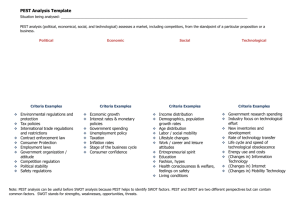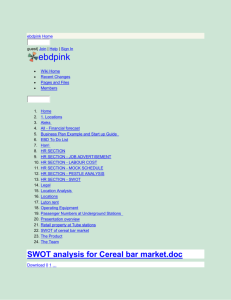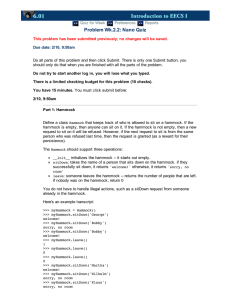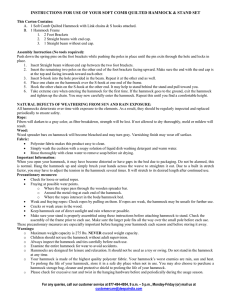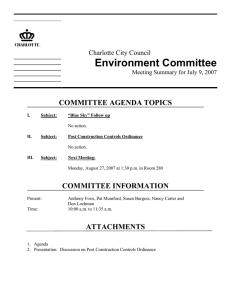Political, Economic, Social, and Technological analysis used in the
advertisement
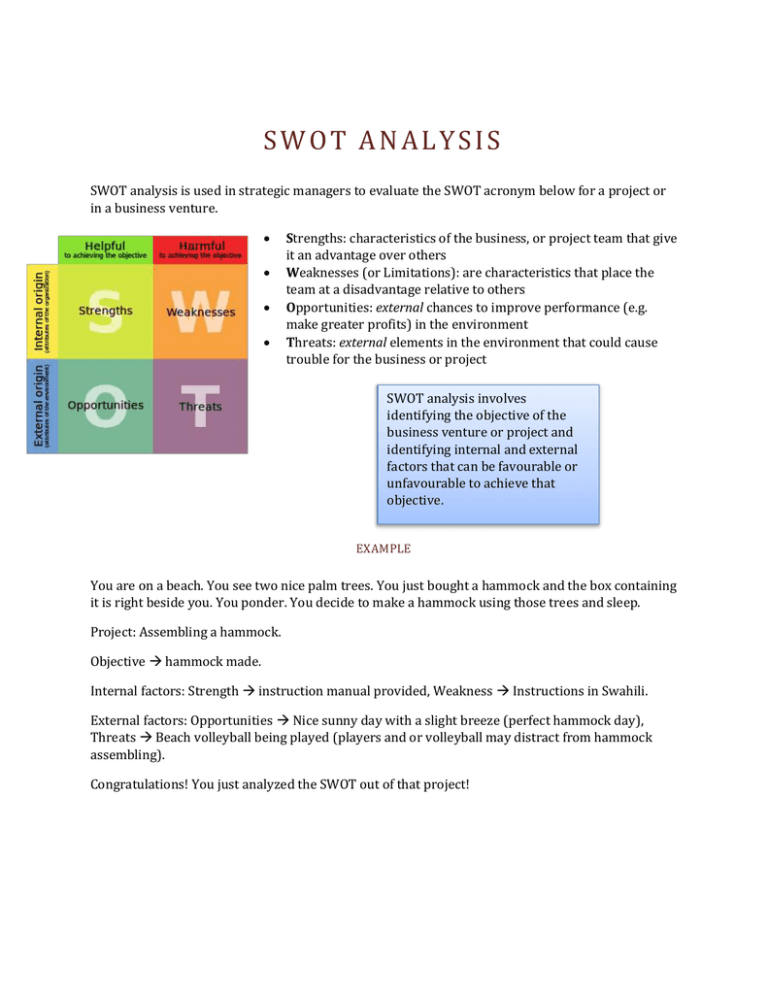
SWOT ANALYSIS SWOT analysis is used in strategic managers to evaluate the SWOT acronym below for a project or in a business venture. Strengths: characteristics of the business, or project team that give it an advantage over others Weaknesses (or Limitations): are characteristics that place the team at a disadvantage relative to others Opportunities: external chances to improve performance (e.g. make greater profits) in the environment Threats: external elements in the environment that could cause trouble for the business or project SWOT analysis involves identifying the objective of the business venture or project and identifying internal and external factors that can be favourable or unfavourable to achieve that objective. EXAMPLE You are on a beach. You see two nice palm trees. You just bought a hammock and the box containing it is right beside you. You ponder. You decide to make a hammock using those trees and sleep. Project: Assembling a hammock. Objective hammock made. Internal factors: Strength instruction manual provided, Weakness Instructions in Swahili. External factors: Opportunities Nice sunny day with a slight breeze (perfect hammock day), Threats Beach volleyball being played (players and or volleyball may distract from hammock assembling). Congratulations! You just analyzed the SWOT out of that project! PEST ANALYSIS Political, Economic, Social, and Technological analysis used in the environmental scanning component of strategic management. Political factors are how and to what degree a government intervenes in the economy. Specifically, political factors include areas such as tax policy, labour law, environmental law, trade restrictions, tariffs, and political stability. Political factors may also include goods and services which the government wants to provide or be provided (merit goods) and those that the government does not want to be provided (demerit goods or merit bads). Furthermore, governments have great influence on the health, education, and infrastructure of a nation Economic factors include economic growth, interest rates, exchange rates and the inflation rate. These factors have major impacts on how businesses operate and make decisions. For example, interest rates affect a firm's cost of capital and therefore to what extent a business grows and expands. Exchange rates affect the costs of exporting goods and the supply and price of imported goods in an economy Social factors include the cultural aspects and include health consciousness, population growth rate, age distribution, career attitudes and emphasis on safety. Trends in social factors affect the demand for a company's products and how that company operates. For example, an aging population may imply a smaller and less-willing workforce (thus increasing the cost of labor). Furthermore, companies may change various management strategies to adapt to these social trends (such as recruiting older workers). Technological factors include technological aspects such as R&D activity, automation, technology incentives and the rate of technological change. They can determine barriers to entry, minimum efficient production level and influence outsourcing decisions. Furthermore, technological shifts can affect costs, quality, and lead to innovation. Environmental factors include ecological and environmental aspects such as weather, climate, and climate change, which may especially affect industries such as tourism, farming, and insurance. Furthermore, growing awareness of the potential impacts of climate change is affecting how companies operate and the products they offer, both creating new markets and diminishing or destroying existing ones. Legal factors include discrimination law, consumer law, antitrust law, employment law, and health and safety law. These factors can affect how a company operates, its costs, and the demand for its products.



